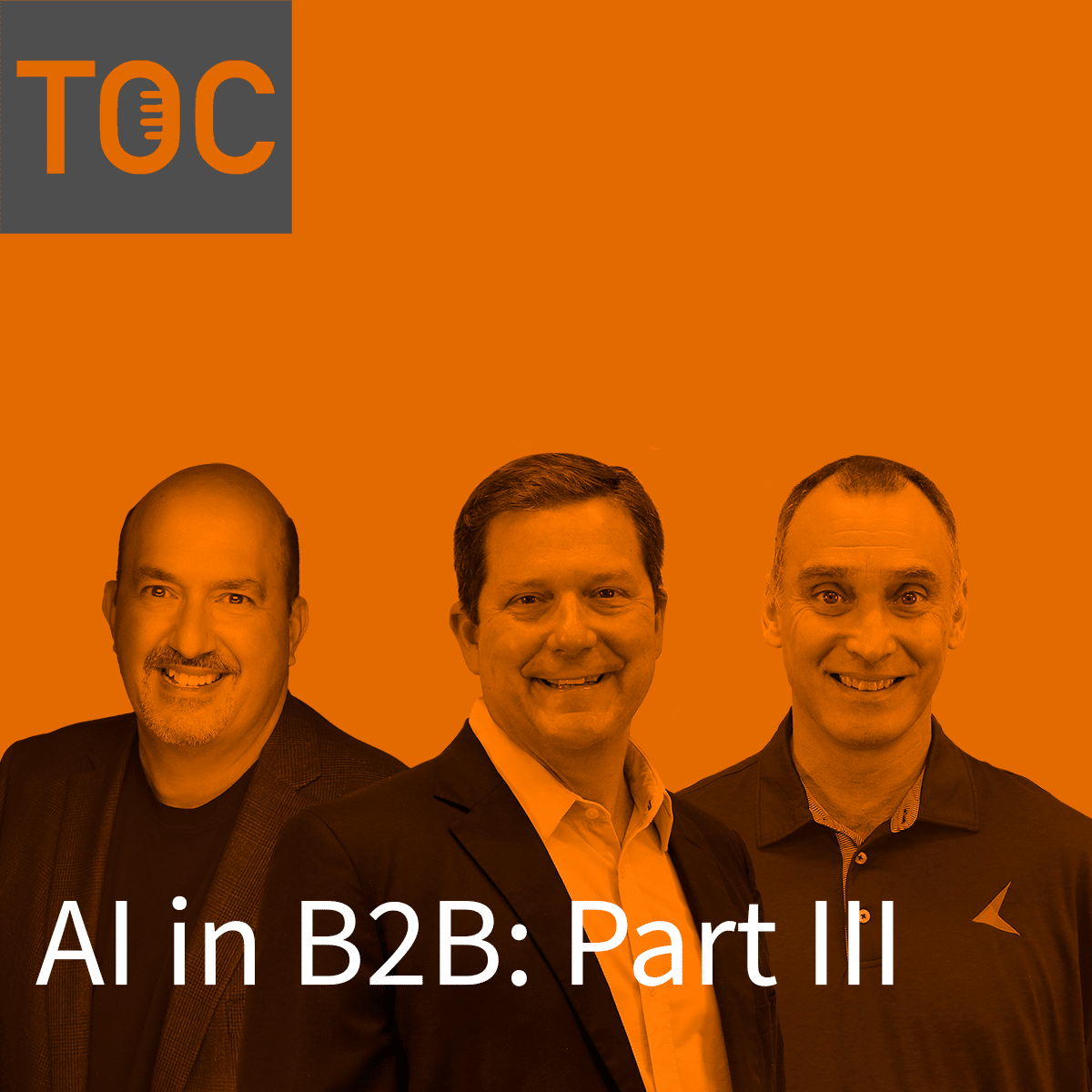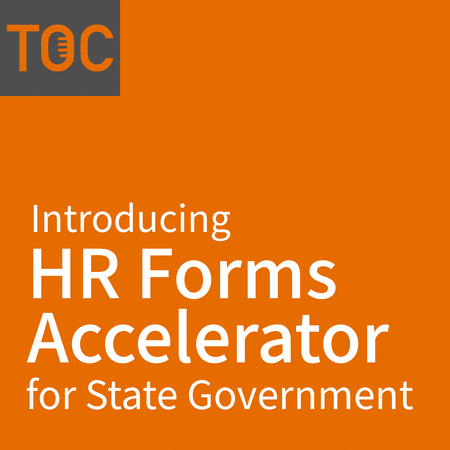This website uses cookies so that we can provide you with the best user experience possible. Cookie information is stored in your browser and performs functions such as recognising you when you return to our website and helping our team to understand which sections of the website you find most interesting and useful.
Listen now on your favorite streaming service!
presented by KeyMark


Summary
Deep Dive Into RPA
The following is a transcription from The Orange Chair Podcast. Today, we’ll answer the question: what is RPA?
To listen to the full episode, or any other episode, you may do so by selecting your preferred podcast listening method on The Orange Chair Podcast page.
Transcription
Alex Frazier (9s): In today’s episode, we are going to be talking about RPA (or robotic process automation). We have Bart Peluso from Blue Prism to discuss all things RPA, what is RPA? How does it work? And what’s the future of RPA. So let’s go ahead and jump on into this podcast.
Hi everybody. And welcome to the orange chair podcast. We are very excited about this episode because we have Bart Peluso, SVP Software Product Marketing: Robotic Process Automation (RPA) for Blue Prism, on the podcast today.
Alex Frazier (42s): It’s going to be a great episode. We’re going to be doing a deep dive into all things, robotic process automation or RPA. So if you’re wanting to learn more about RPA, sit back and listen. This podcast is for you. So, Bart, Hi, welcome to the podcast.
Bart Peluso (57s): Hey, thanks so much, Alex. I’m real excited to be on it.
Alex Frazier (1m 0s): Awesome. Well, we’re glad you’re here too. I just wanted to kick things off and learn a little bit more about, you know, who you are. How long have you been working for Blue Prism? And if you could give us a fun fact about yourself.
Bart Peluso (1m 11s): Sure. I’ve been with Blue Prism now going on four years. I began when there were about 50 people in the company and now we have well over a thousand. So seeing a lot of growth in my role, running product and industry marketing.
Alex Frazier (1m 33s): Great. So Bart, can you give us a fun fact about yourself?
Bart Peluso (1m 37s): In 2006 I bought and built a used a police car and I had never had a job in law enforcement.
Alex Frazier (1m 48s): Oh wow.
Bart Peluso (1m 49s): We had a technology company that invented a new type of network called a mesh network. And we wanted to prove to police departments everywhere that all of their electronics could ride on this network at high speeds, video cameras and everything. So I went to a company called shields and I bought a police car and I built all the technology in it and there was driving around in a police car. We were picked up by FOX news.
What is RPA?
Alex Frazier (2m 19s): Wow. That’s amazing. Well, great. Thank you for sharing that, but I do want to go ahead and jump right into this. So first and foremost, can you tell us what RPA is? What is robotic process automation? And can you give us some RPA examples?
Bart Peluso (2m 35s): Yes. You know, a lot of people are asking that question. What is RPA and how does it work? Robotic process automation encompasses the design of a process and the automation of that process, as well as the, of it, the way we Blue Prism works is a user sits in front of a grid and they drag and drop shapes onto a graph and connect them.
Each one of those shapes represents a step in the process, like go to this website and maybe the second step is fill in your credentials. And the third step is move over to this mainframe database and pull this piece of information and so on and so forth. The end results is the automation of a very complex process that would take a person or many people a lot of time to execute. And we’re automating that.
RPA vs RDA
Alex Frazier (3m 56s): Can you give us just a brief overview of RPA vs RDA, robotic desktop automation?
Bart Peluso (4m 9s): Sure. So in 2017, the IEEE created the 2755 standards and they delineated the difference between robotic desktop automation and robotic process automation, as well as defining some other tangential technical terms, such as AI and process mining. Robotic desktop automation is automating on a desktop device, a laptop computer, or a desktop computer using a recording mechanism.
So if someone has to do a redundant task of say a thousand things, representing a thousand different accounts, they would do the first one and hit a record button. And then the software fills in the variables and we automate the next 999, the two issues with RDA or first scaling it’s done at the desktop level. So it’s independent to that particular user.
When you scale out to a hundred or a thousand users, it’s virtually impossible to manage. The second issue in the enterprise with RDA is the logging. When you’re working on a desktop device, by definition, the recording is going to share the credentials. So the human being has a username and password that’s shared with the bot.
And that creates what we call a repudiation issue because if something ever goes to court, you can’t determine if it was the human that made the error or the bot. It’s very light on the positive side and very easy to get started within 20 minutes, anyone with a credit card could get started with robotic desktop automation, robotic process automation is centralized.
Processes are assembled with Lego bricks and pulls together and built and expanded on in a central location. And they scale very, very well. We have customers that have over a thousand, what we call digital workers shared across tens of thousands of employees. The second differentiator on robotic process automation is the logging with RPA, the digital worker, or the software robot gets their credentials separately from the human being.
And they get them through a credential manager within Blue Prism or third party credential manager like CyberArk, which is what they use in the Pentagon. So then you have what we call non repudiation, where if something ever goes to court, everything is documented. We all know what the person did and what the digital worker did because their credentials are different.
Those are really the two key differences, but there are others contingent upon the scale of the deployment.
Advantages of a Digital Workforce
Alex Frazier (7m 53s): Okay. So I know you mentioned a digital worker. So what is, you know, the advantage of a digital workforce, and what’s kind of the difference between a digital worker and that process that’s being automated.
Bart Peluso (8m 8s): You know, Alex, up until recently, we only dealt with a digital workforce, which is more than one software robot, but this year we began selling onesies, if you will. And the adoption has been really strong where people in smaller companies are buying one digital worker as trial or to use in a kind of a specific scenario.
But a digital workforce is anywhere from ten to a thousand software robots with Blue Prism connected RPA. The software robot is separate from the process. So earlier I spoke of dragging and dropping these items across the graph to create an automatic automated process, the digital worker is separate from that process.
So therefore one digital worker could have a thousand processes or tasks to do based on the priorities that we give them in the software and they’ll do job. Number one, the job, number two, then job number three, or we can have a thousand digital workers or software robots all doing the same process. And we actually have a customer that does that. They might have one enormous thing that had to be done for hundreds of thousands of accounts.
And they light up their entire digital workforce to do the work, but think of the workforce as we’re than one working in unison.
Scalability of RPA
Alex Frazier (9m 59s): I want to speak to that a little bit. So how easy or difficult is it to build a robotic process automation solution and then, you know, change that solution. So I know you mentioned just now that you have a customer that ended up having to change all of their workforce to do that one task was, is that an easy or difficult thing to do?
Bart Peluso (10m 18s): Okay. Well, first step back, and look at the installation of the, of the digital workforce. Blue prism operates primarily on enterprise scale with literally the largest companies in the world, American Express, Coca-Cola, Prudential HSBC, which happens to be the largest bank on the planet.
So the deployment involves a robotic operating model, and it does take some weeks to get everything up and running and integrated with all the systems that are found in a heterogeneous global it environment. The processes can be built very simply or more complex.
So say you were to open a bank account or to respond to a price quote. I can probably build that process in Blue Prism within a few minutes. However, some of our customers have really, really complex processes that they’ve been working on in crafting and changing over the years, we have one customer that completely fulfills auto, home and life insurance policies, automated process.
So, you know, there’s a delineation here between getting the digital workforce installed and kind of telling them what to do. It’s not unlike hiring human beings, bringing them into the company, giving them, you know, the task and the objectives of what to do can be very simple or it can be complex.
RPA Ease of Integration
Alex Frazier (12m 27s): So can RPA integrate with current line of business solutions? Are there any restrictions that come with that?
Bart Peluso (12m 35s): The short answer is no, the blue prism architecture, which has been installed in some of the largest financial institutions now for 19 years and counting with designed to work with virtually everything, because when you’re building the process, first off, we’re not using code. You’re actually building the process using natural language.
That process is built as if it was a human being. So say we wanted to build a process that took someone’s information, went out to a mainframe to verify it went out to a series of servers and then did something on an external URL. If a human being could do that, then you can go into Blue Prism, building out each object or each step in that process. The same way.
Of course, there’s going to be a few exceptions out there. iOS is, is one of them by Apple, but you don’t see a lot of that in the enterprise. You know, if, if there’s issues where someone refuses to share their code or their interoperability, but thus far with 2,690 customers, we have not seen a scenario where Blue Prism could not enter operate with whatever hardware or software infrastructure was within their data center.
Alex Frazier (14m 23s): So I know you mentioned that there’s no coding involved in implementing blue prism RPA. So can you speak to some of the changes of how a bot can evolve with the process?
Blue Prism is “Code Optional”
Bart Peluso (14m 34s): First, let me step back and address the “no code.” So a Blue Prism user creating an automated process could be me, could be, you does not need to code. Okay?However, through our digital exchange, we have connections to 350 plus API. And some of them get pretty complex, 150 of them came from Google cloud.
We have Microsoft cognitive and we have IBM Watson. And we’re now using the terminology “code optional” because if you’re building a process and you go to the digital exchange, i.e. app store and you download an API to something extremely complex from IBM Watson or Google cloud, then we call that “code optional” because you can do some coding when you’re building a process with that with blue prism exclusively, right?
And you’re not using any of these extensive AI related connections. Then there is, there is no code, but we’re using the term “code optional.” You don’t need it. But if you want to get really creative, particularly with AI offerings, you can.
RPA Solution Flexibility
Alex Frazier (16m 8s): So with that, if I were to code something or I was to go get an API and wanted to put that coding in, how easy is that to change a bot’s process? You know, versus if you had a bot with no coding? So it would be Blue Prism exclusive and there’s no coding involved. How easy or difficult is it to change those processes?
Bart Peluso (16m 32s): Okay. A really good question. And it’s, it’s probably contingent upon the semantics. The biggest question that we get in the field all over the world. I want to, I want to stop back and take a look at the terminology. When you asked about digital workers and digital workforce, we use that terminology because the digital worker, the software robot, whether it’s one or whether it’s many is separate from the process, the term box is used to define when the process is the robots.
That’s what you see in the RDA realm, that the process itself is the bot. We use the term, you know, software robot or, or digital worker, but you are question had to deal with the, the, the coding and the changing of the process. The best analogy-and this is a really gross analogy-is like a breakfast Lego bricks. So let’s say I wanted design an automated process to verify, you know, your, your, your, your, your bank account information or something like that.
I would build that out in just a few minutes. And that might involve what we call five objects or visual business objects. That means five steps within that process. One of them is going to the URL, the banking website, one of them is logging you in, you know, that’s a separate step and it might be three to five of those in order to do that simple process.
Each one of those steps in blue prison is safe. And it’s a building block is, is a Lego block. And it’s saved in an inventory. The entire process itself is also saved. It saved an inventory. So somebody else working across the world can pull that out and add one thing to it, or go in and change it. Now, if they change one of those objects and they say, don’t go to this bank’s website, go to this bank’s website, both of those objects for me.
Now you have two building blocks there. So in short order, it’s really, really easy to amend an automated process. What we found is that enterprise customers do better over long periods of time. So they start with really simple processes and they grow to get really, really complex.
And we’re seeing this in government accounts, and we’re seeing this with financial institutions and it’s because they’re, you know, it’s like giving a kid Lego bricks. They start building one day and they build on it over time. And that impacts ROI, which goes back to your original question on the difference between saying RDA solution and a true connected RPA solution with RDA.
You know, when you’re doing recording, you can get ROI within minutes, you download it onto your desktop and boom, you’re off. And you’re running right with a blue prism using a thousand digital workers across for competence, you know, in 20 countries and 200,000 people, it takes time to build up those automated processes, but the more you use it, the easier it gets because your inventory of pre-build processes that are changeable reusable, and your inventory of objects, building blocks, grows and grows and grows over time.
So we’re seeing, you know, exponential complexity in the processes out in the field, which means your ROI increases significantly month over month, year over year.
Why is RPA Trending Upward?
Alex Frazier (21m 10s): So just kind of, you know, jump off of that. So why now? Why is RPA the digital workforce? Why is it a big deal? Now?
Bart Peluso (21m 22s): That’s a good question. I’m going to take a moment to, to say, I think like every new technology, you kind of go through the stages of early adopters and the early majority, and then majority. The early adopters of RPA, where the banks, the financial institutions, and, you know, we were working as a consultancy way back in 2001 with Barclays and Lloyds.
And, you know, there was scenarios where financial institutions had to find another way to, to get things done efficiently and effectively, right. They were just looking for ways to get payment stuff, to get more done, you know with less people and less money over time. It hit the, the early majority, because a lot of tangential technologies such as artificial intelligence and process mining and OCR companies like Abbyy realized that their technologies could be exponentially effective when they’re used by a digital workforce.
So you saw this adoption with rpa in insurance, rpa in retail, rpa in healthcare, and rpa in government.
And then finally the analysts woke up, right? So Gartner put out its first magic quadrant on this year on RPA.
And we actually coined that phrase, “RPA,” that didn’t exist.
And, you know, we’re starting to see a crossing to the majority were, Hey, there are no use cases out there of financial institutions and other businesses that have been using this for years, in some cases, even decades and proven.
And now you have Gartner and Forrester looking at it and measuring it. And you have all these other companies that are building API APIs that connect to it. So now seems to be really a pivotal, pivotal time. Right. I believe we’re quotes, crossing the chasm now, and we’re seeing an explosion of adoption of RPA.
The Future of RPA
Alex Frazier (24m 15s): Yeah. So, you know, I know like it seems like, you know, RPA and a digital workforce and all of that is the thing to have now. It seems to be exponentially helping companies just kind of gain a grasp on their ROIs, and just advance them in multitude of ways.
But what does the future of the product look like? You know, do you have any ideas or any expectations of what you think the future of RPA could look like?
Bart Peluso (24m 43s): I do. I do. I’m going to step back and squeeze in one more. One more thought though, there there’s also some misconceived negative connotation with 2,600 customers.
We don’t really have any that are replacing their head counts. You know, the concept of the self driving truck, putting all the truckers out of work.
What we’re seeing is the elevation in the workforce where people are now freed up to do more creative work that requires human interaction and let the digital workers handle the repetitive and the mundane, even if those processes get complex, they tend to be repetitive and operations oriented.
Then the employees are freed up to do the creative work that requires a human being, but moving forward to the future, what I see in the future, and we hear it, we present particularly our blue prison, AI labs are working diligently to make that future vision a reality. What we see is the digital worker becoming more intelligent in terms of intuitiveness and intuitiveness is based on data, the ability to access data and the ability to process data.
And we’re starting to see that in areas outside of RPA as well. I mean, your mobile smartphone is getting smarter when you’re typing a sentence is predicting the next word based on perhaps your previous texts, right. It’s predicting, you know, what’s, what’s coming.
Alex Frazier (26m 51s): Yeah. Based on like most used words.
Bart Peluso (26m 53s): Yeah, no, if we can get visual workers frou in what we call embedded AI and embedded intelligence engine to sift through data really quickly, then the digital worker can see trends and issues and anomalies, and then they can take that anomaly and escalate that anomaly to a human being. Right. So we’re seeing in the future smarter visual workers that can be more deterministic and making decisions on what to do.
That’s what we believe the future is now.
Final Thoughts and Closing
Alex Frazier (27m 40s): That sounds great. That sounds like it would be really helpful. Do you have any final thoughts that you’d want to share as we’re kind of closing our time today?
Bart Peluso (27m 50s): I would just kind of reiterate that, you know, automation is not about replacing human labor. It’s about elevating it.
So instead of the human in the financial institution or the insurance company or the detailing company, instead of a vendor doing a repetitive process, they’re creating a better process and letting the digital workers do that repetitive operational work.
Alex Frazier (28m 28s): Well, I would say the future of digital workforce is bright. And that sounds really good. And, and I think a lot of times when you hear about, you know, just echoing what you said, when you hear about growing technology and implementing more and more intelligent automation solutions, it probably seems, Oh, well that means head count will go down. But really it’s, it’s just about utilizing your people and utilizing technology and the resources that you have.
Alex Frazier (29m 1s): So that sounds really awesome. And Bart, thank you so much for, you know, being on the podcast today and thank you so much for coming and sharing all things Blue Prism.
Bart Peluso (29m 11s): My pleasure, Alex.
Alex Frazier (29m 24s): Well, that’s all that we have for you guys today. Thank you so much for listening to this podcast. The Orange Chair Podcast is brought to you by KeyMark.
If you liked this podcast, please leave us a rating like and subscribe to our podcast channel, wherever you guys are listening to podcasts, and you can even follow us on Instagram and Facebook. And we would love to hear from you.
This podcast is produced by Clay Tuten and me, your host, Alex Frazier. Until next time, bye guys.







